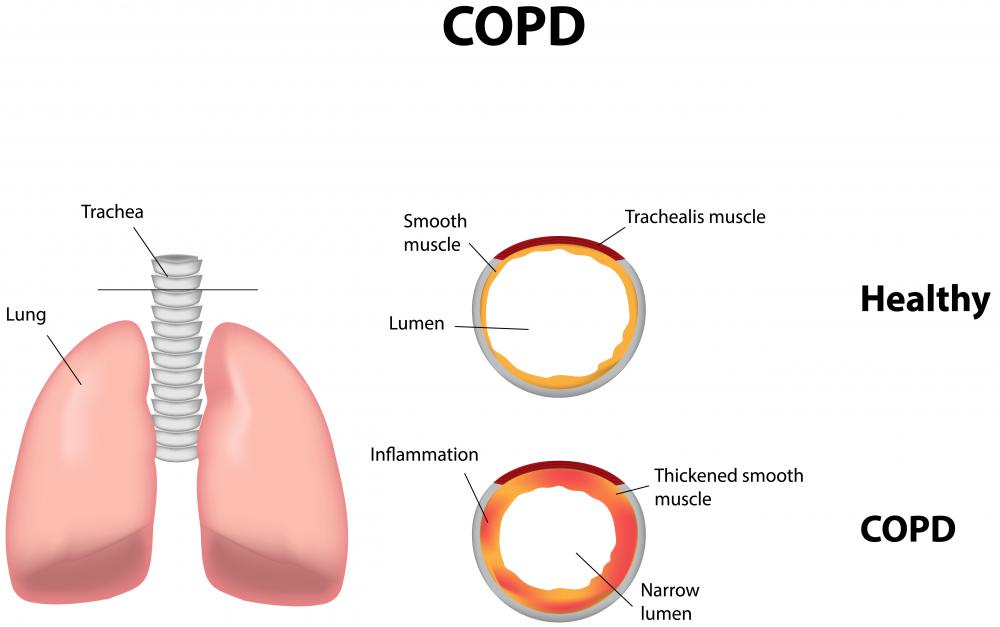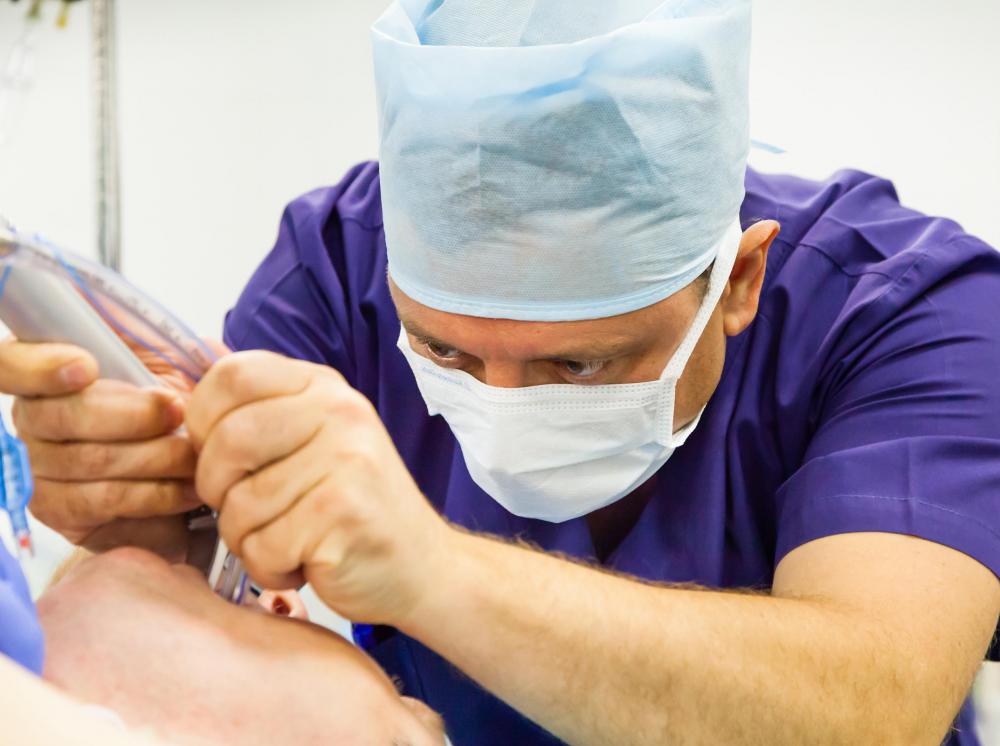At TheHealthBoard, we're committed to delivering accurate, trustworthy information. Our expert-authored content is rigorously fact-checked and sourced from credible authorities. Discover how we uphold the highest standards in providing you with reliable knowledge.
What Is Heliox Therapy?
Heliox therapy is a medical treatment using a mixture of helium and oxygen gases to alleviate symptoms of various types of respiratory distress that has been available to medical science since 1934. These treatments are for conditions like asthma, bronchiolitis, and chronic obstructive pulmonary disease (COPD). Helium has replaced nitrogen, which was used in earlier attempts as a carrier gas, because it is less dense than nitrogen and enables easier breathing and the absorption of oxygen into the bloodstream occurs more readily. The use of this therapy is also done for conditions that don't involve specific respiratory diseases, such as partial blockage of the upper airway by cancerous tumors, and swelling of the throat due to anaphylaxis or allergic reactions.
The helium and oxygen mixture administered is usually 70% helium and 30% oxygen, or 80% helium and 20% oxygen. The high concentration of helium is necessary, as anything below 60% makes the gas mixture too dense for significant opening of airways. While the treatment is effective at alleviating a wide range of respiratory distress conditions, it only treats the effects and has no benefit at preventing the underlying cause of the condition. The use of heliox therapy, therefore, is often done in conjunction with prescribed medication or other medical approaches such as surgery. One of the key benefits of this therapy, however, is that, as of 2011, no significant adverse side effects from the treatment have been documented.

Several modern hospitals recognize the benefits of heliox therapy to the point that compressed heliox gas cylinders are kept on hand for emergency respiratory conditions, or regulators and other equipment to mix the gasses from separate supplies exists. Respiratory therapists are trained in the use of the equipment using a mechanical ventilator as well as in checking the effect of the treatment using pulse oximetry to measure blood oxygen levels. Both intubated and non-intubated patients can be treated with heliox therapy, where intubation involves inserting a flexible tube into the larynx to administer the gas. Research as of 2002 into treating infants with this therapy, such as those that have acute bronchiolitis, has also shown significant benefits. Infants from one month to two years of age showed improvement within one hour of treatment that reduced their risk for a heart condition like tachycardia, rapid heart rate, and tachypnea, which is excessively fast respiration.

Although the benefits are well-known as of 2011, some disadvantages to the treatment exist that may make it uncommon in some regions. Administering the treatment involves a certain level of expertise that is not always available, and the equipment for heliox treatment is expensive. There is also some debate as to the benefits of heliox therapy due to variations in the concentrations for the gasses, how they are administered, and for what condition, so some hospitals have refrained from investing in the treatment. Potential though rare side effects from the treatment could also include hypothermia if the gas mixture is below 96.8° Fahrenheit (36° Celsius) when administered, hypoxia if less than 20% oxygen is present, and the possibility of delivering too much or too little volume of the gas for the patient's needs.
AS FEATURED ON:
AS FEATURED ON:



















Discuss this Article
Post your comments